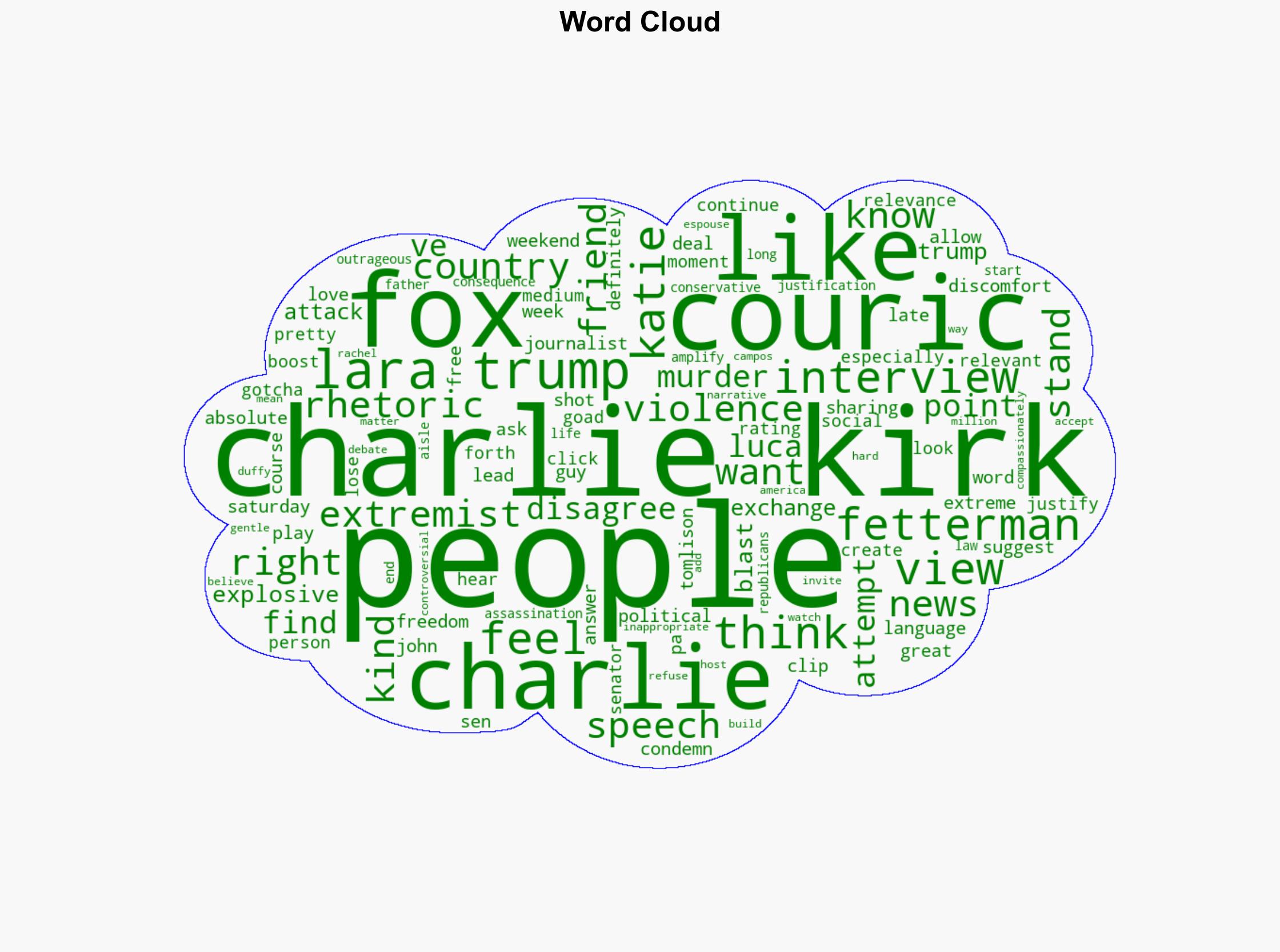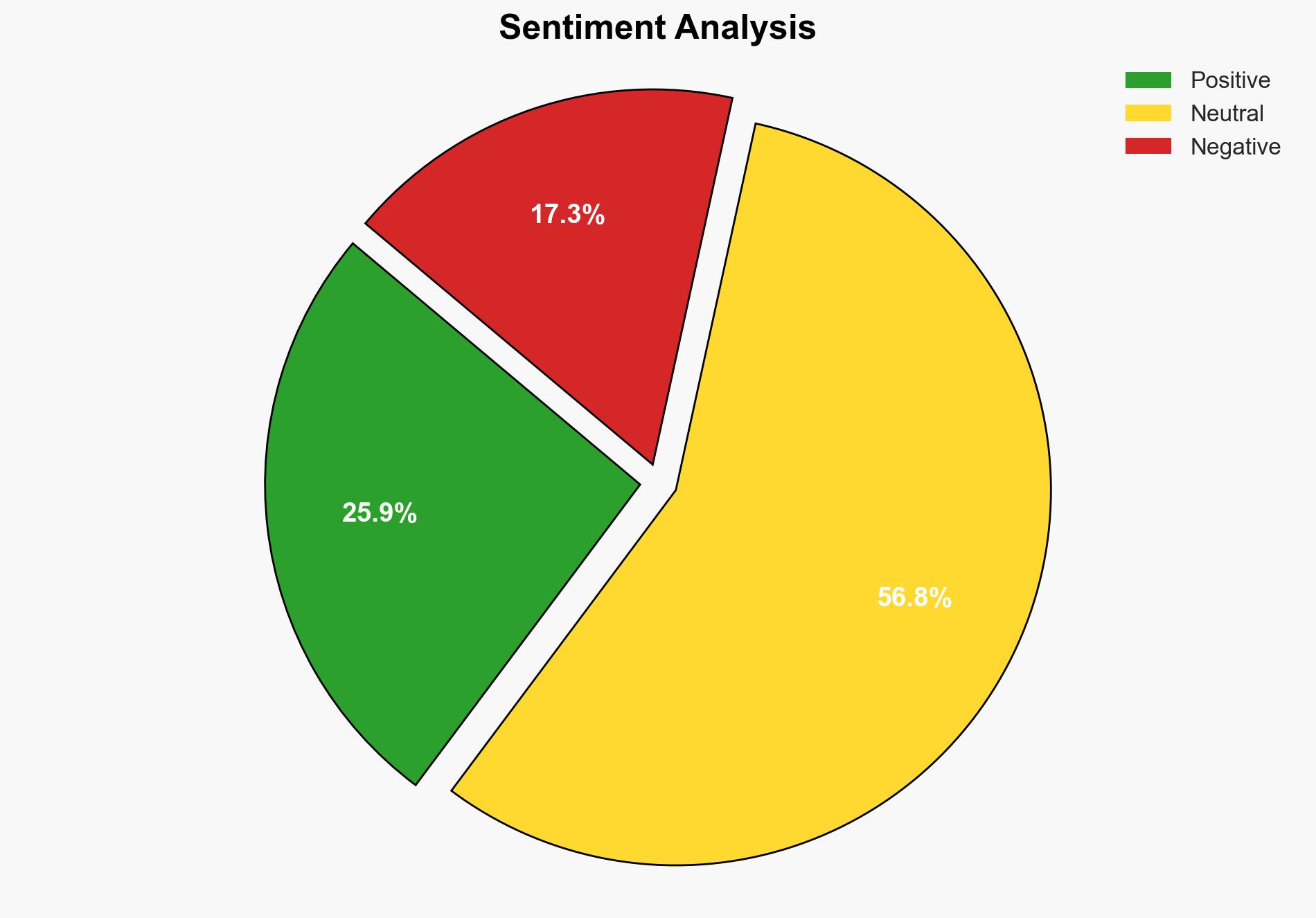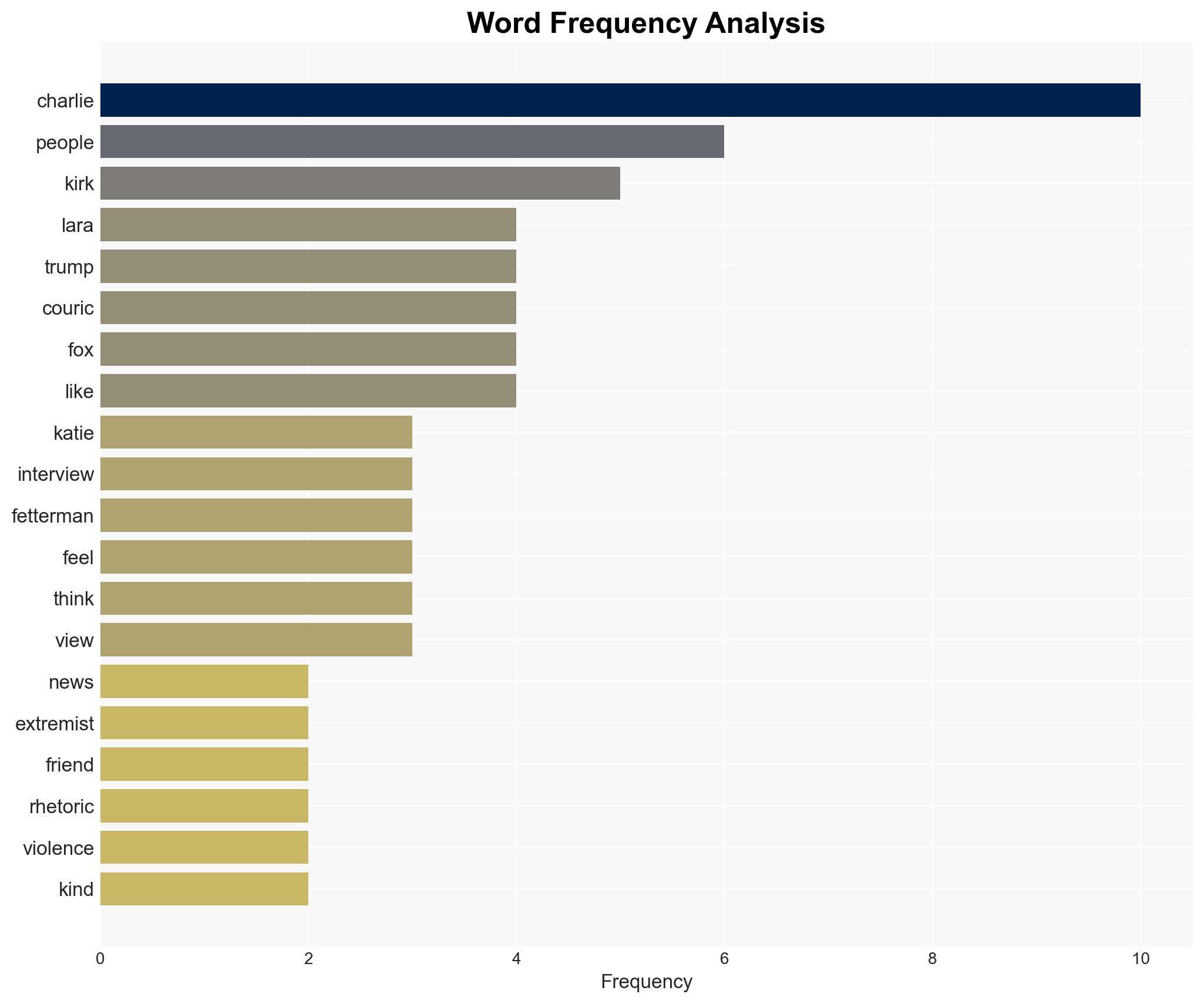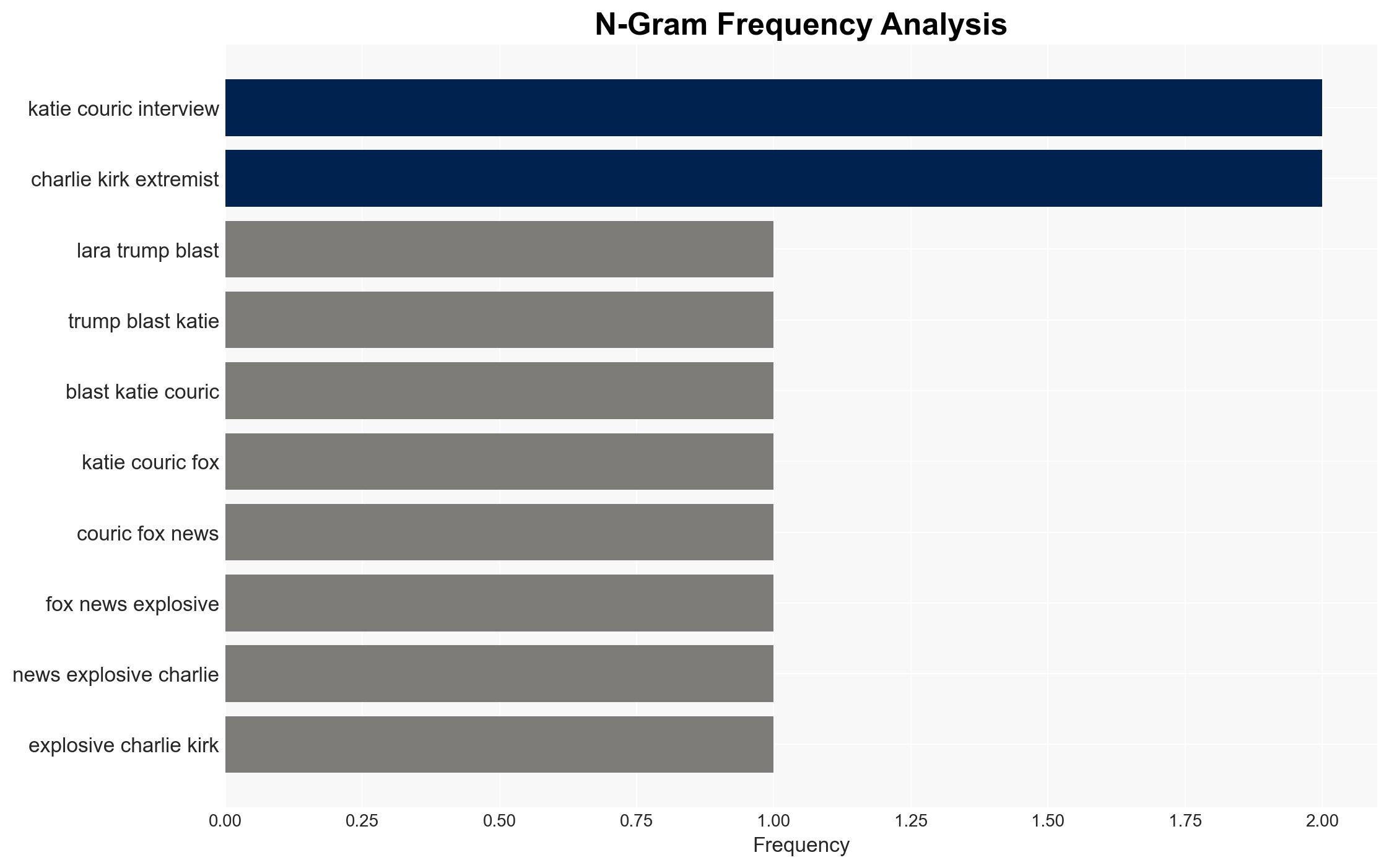Lara Trump Blasts Katie Couric on Fox News Over Explosive Charlie Kirk Exchange – Mediaite
Published on: 2025-11-15
AI-powered OSINT brief from verified open sources. Automated NLP signal extraction with human verification. See our Methodology and Why WorldWideWatchers.
Intelligence Report:
1. BLUF (Bottom Line Up Front)
The strategic judgment is that the exchange between Lara Trump and Katie Couric reflects a broader media and political polarization, with a medium confidence level. The most supported hypothesis is that Lara Trump’s comments are part of a strategic effort to galvanize conservative support by framing media narratives as biased against right-wing figures. Recommended action includes monitoring media narratives for shifts in public sentiment and potential escalation in political rhetoric.
2. Competing Hypotheses
Hypothesis 1: Lara Trump’s criticism of Katie Couric is a deliberate attempt to energize the conservative base by portraying mainstream media as antagonistic towards right-wing figures. This hypothesis is supported by the context of the exchange, where Trump aligns with Charlie Kirk’s rhetoric and frames Couric’s interview as an attempt to undermine conservative voices.
Hypothesis 2: The exchange is a spontaneous reaction to perceived media bias, reflecting personal grievances rather than a coordinated strategic effort. This hypothesis is less supported due to the structured nature of Trump’s comments and the alignment with broader conservative media narratives.
3. Key Assumptions and Red Flags
Assumptions: It is assumed that Lara Trump’s comments are representative of a broader strategic communication effort rather than isolated personal opinions. Additionally, it is assumed that media narratives have a significant impact on public sentiment and political polarization.
Red Flags: The potential for confirmation bias exists, as both sides of the political spectrum may interpret the exchange through pre-existing beliefs. Deception indicators include the possibility of exaggerated claims to provoke emotional responses from the audience.
4. Implications and Strategic Risks
The exchange could exacerbate political polarization, leading to increased hostility between media outlets and political figures. There is a risk of escalating rhetoric that could influence public discourse and potentially incite political violence. The situation could also impact media credibility and trust, affecting the informational landscape.
5. Recommendations and Outlook
- Monitor media narratives for shifts in public sentiment and potential escalation in political rhetoric.
- Engage in dialogue with media outlets to promote balanced reporting and reduce polarization.
- Best-case scenario: The exchange leads to increased awareness of media bias and prompts more balanced reporting.
- Worst-case scenario: The situation escalates, leading to increased political violence and further erosion of media credibility.
- Most-likely scenario: The exchange contributes to ongoing polarization but does not significantly alter the current media landscape.
6. Key Individuals and Entities
Lara Trump, Katie Couric, Charlie Kirk, John Fetterman, Rachel Campos-Duffy
7. Thematic Tags
National Security Threats, Media Polarization, Political Rhetoric, Public Sentiment
Structured Analytic Techniques Applied
- Cognitive Bias Stress Test: Expose and correct potential biases in assessments through red-teaming and structured challenge.
- Bayesian Scenario Modeling: Use probabilistic forecasting for conflict trajectories or escalation likelihood.
- Network Influence Mapping: Map relationships between state and non-state actors for impact estimation.
Explore more:
National Security Threats Briefs ·
Daily Summary ·
Support us
·





